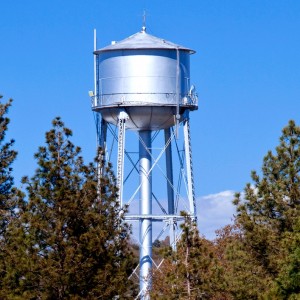What it means if you have well water—or not!
Do you know where your water comes from? While you may not think much about it, water touches every corner of your home. Most homeowners get their water from a municipal source (versus a private well), but did you know that even water from a city supply could be partially sourced from a well? Your water can come to you in several ways: from the city water supply, a city well or a private well.
well.
Determining your water source
If you rely on your city for water, how can you learn more about where it comes from? Start by checking with your water supplier for more information (their contact information is typically on your water bill). Additionally, you should receive a consumer confidence or drinking water quality report online or in the mail each year. This report tells you where your water comes from and what’s in it and may even include your water hardness (you can test your water hardness for free here). Homes with a private well won’t receive a water report, as they rely on a septic system instead of sewer systems.
Decoding well water differences
If you discover that a portion of your water comes from a well, you may wonder about the quality. Municipal water systems treat all of their water sources, making it safe and clean to drink and use in your home. Homeowners with private wells, which use ground water, are responsible for maintaining their well with regular service and periodically testing for bacteria, pesticides and other common contaminants.
Another characteristic of well water is that it tends to contain more minerals and sediment. Sand and soil can enter wells through infrastructure defects in the well, and the harder your water is, the greater the quantity of calcium and magnesium there will be. Together, these two issues can lead to clogged valves and fixtures, as well as damaged water heaters and appliances.
Selecting the right softener
If your home relies heavily on well water, investing in a system that not only softens but also removes extra sediment and iron is key.
Wondering if your water supply contains too much iron? Unless the water straight from your tap is yellow or orange colored, you may not realize that you have high levels of iron. Ferrous, or clear water, iron completely dissolves in water, which is why you don’t notice it right away. The presence of clear water iron will be characterized by reddish-brown stains in your sink or toilet and yellow-tinged water after your water has sat out. An easy way to rid your household of this problem is to add iron-removing salt pellets to your water softener. Additionally, larger capacity softeners are also capable of removing extremely high levels of ferrous iron. If you find these systems are not taking care of the problem, a separate iron system can be installed before your softener. This system will help remove the iron and eliminate staining.
While you won’t see the damage of sediment-rich water on your fixtures, it can easily cause muddying in your softener or clog pipes and appliances over time—both of which can lead to costly repairs. This is another instance where a more advanced softening and filtering solution will improve the quality of your water and safeguard your home against unnecessary repairs.
Whether you’re on well water, city water or a combination of the two, there is a water system that can meet your needs. From making your hard water soft to including a whole-home filter, your biggest water woes can be easily fixed no matter where your water comes from.

